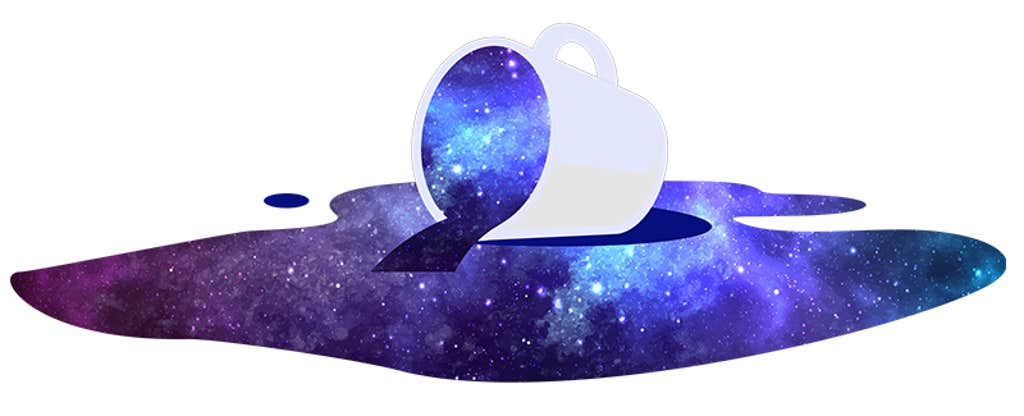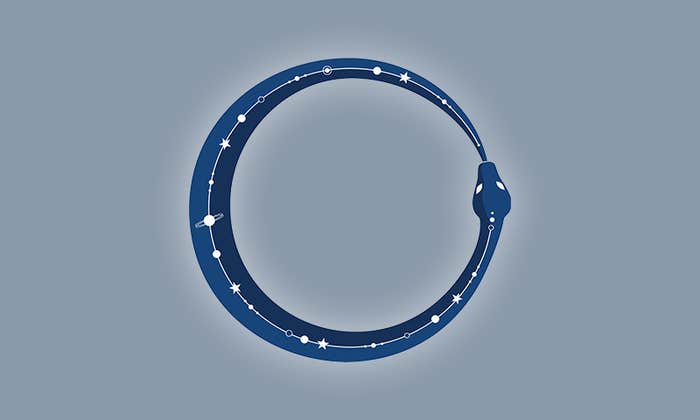In his 1967 short story “The Southern Thruway,” Argentine writer Julio Cortázar conjures a catastrophic traffic jam just outside of Paris. The gridlock endures for months, forcing motorists to build an entirely new society around their immobile cars. It is a thought that has perhaps crossed many people’s minds as they are stuck in seemingly interminable traffic: What might happen if …
Cortázar’s 20th-century fiction often played in the realm of the fantastical as a way of probing the deeper truths about existence. In a series of lectures delivered in 1980 at the University of California, Berkeley, Cortázar explained that, in his work, “the fantastic is at the service of reality.” He continued:
The fantasy, the fantastic, the imaginable that I love and with which I have tried to make my own work is everything that ultimately serves to project more clearly and with more strength the reality that surrounds us.
Dabbling in the fantastic might seem natural for a fiction writer—but at sharp odds with science. It turns out, however, that fantasy may play a similarly useful role in illuminating the darkest and most mysterious corners of science, including seemingly inaccessible regions, such as the study of energy within black holes.
Such fantasies—like Cortázar’s epic traffic jam—are actually a very useful form of thought experiment. What might happen if … In physics, thought experiments have proven invaluable over the centuries for exposing weaknesses in existing theories and generating new ideas.
Thought experiments, of course, are not like real experiments performed in the lab. They usually consist of fictional—sometimes even fantastic—situations that occur in the mind of the scientist: Demons, spirits, and giant teacups can all be part of scientific thought experiments. How can it be that thought experiments, mere exercises of the imagination, can teach us something about our scientific theories—especially in today’s era of high-computation physics? This question motivated me to open a new chapter in my own research.

Several years ago, I was on a ski tour in the Alps with a colleague of mine from the University of Salzburg, the philosopher and historian of science Rawad El Skaf. My poor level as a skier together with our enthusiasm for discussing big ideas in physics led us to spend much of the day on the terrace of a very charming Hütte (cottage), mulling over the role of thought experiments. We arrived at the following conclusion, which we later described in a paper together: Thought experiments in black hole physics help us reveal and resolve tensions and, in some cases, inconsistencies between different theories—much as they have throughout the history of physics, including in the revolutionary theories of general relativity and quantum mechanics.
More than a century ago, one of the most famous thought experiments in physics helped rip a hole in one of its key laws. It involved imaginary gasses, a door, and, perhaps fittingly, a demon.
In 1867, the second law of thermodynamics reigned. It declared that entropy cannot decrease in an isolated system—whether that’s a closed chamber or a universe—and that heat only flows spontaneously from hot to cold—and never the other way around. One of the reasons why the second law was (and still is) so important is that it has a series of implications at all levels. It predicts that a cup of hot coffee will eventually cool down; that temperature differences are very hard to maintain; and even that, as time passes, we will grow older and not younger.
Fantasy may play a useful role in illuminating the darkest and most mysterious corners of science.
But that year, Scottish physicist James Clerk Maxwell—a pioneer of statistical physics—considered what could happen if there were a being who could play a game with gas molecules? His conceptual experiment imagines a small being, called later a “demon,” which can manipulate (without expending energy) the flow of gas molecules in a container by controlling a door that divides the container into two parts. We assume that when the gas molecules approach the door, the demon can quickly select the molecules allowing only fast-moving molecules (which produce hot temperatures) to pass from the left- to the right-hand side of the container and allowing only slow-moving molecules (which produce cold temperatures) to move from right to left.
By doing this, the demon is able to make one part of the container colder as the other gets hotter. Importantly, this implies that temperature differences could be produced at the expense of no work—and that entropy can also decrease in the process.
Maxwell’s fictional demon allowed him to “pick a hole” in one of the most important physical laws of his era. He disputed not only the deterministic character of the law, showing that it allows for exceptions, but also, and more profoundly, he disputed the idea that the laws of nature always follow a simple, regular path. The second law of thermodynamics, he concluded, is valid only statistically.
Could we have seen those possible violations of the second law without invoking demons? Perhaps, but these fantasies certainly helped scientists make these problems with the second law more intuitive. As historian of science Jimena Canales puts it in her book Bedeviled, “Scientific thinkers used demons to explore problems, test the limits of what is possible, and better understand nature.”
Aspects of nature can be vexingly hard to understand when we lack empirical evidence about them. Such is the case with the relatively new field of black hole thermodynamics. This discipline aims to ascribe thermodynamic properties, such as temperature, to black holes, which are defined in astrophysics as “regions of no escape.” It is a challenging intellectual space for even the brightest minds. It’s hard to speculate what might be happening with energy and entropy in a black hole when relevant information is as-yet essentially undetectable. So, in areas like this, thought experiments appear to be at their most essential.
As Erik Curiel, a philosopher of physics working on the foundations of black holes, has written: “Why assume a classical black hole has an entropy in the first place? The best answer to this is implicit in the series of thought-experiments.”
To better explain Curiel’s position, let us take a trip back in time to the origins of black hole thermodynamics. At the beginning of the 1970s, John Wheeler, an eminent physicist, wanted to challenge his graduate students at Princeton University. So he suggested the following situation: Imagine holding a cup of tea in the vicinity of a black hole. Instead of drinking the tea, what might happen if you threw it into the black hole?
Could we have seen possible violations of the second law without invoking demons?
He used this simple thought experiment to reveal a tension between the second law of thermodynamics and the “no-hair theorem,” which is a conjecture in general relativity. According to the no-hair theorem, a black hole is determined only by well-known parameters—namely its mass, angular momentum, and electric charge. Wheeler referred to this with the phrase that “black holes have no hair” because it implies that all the information, for instance about the formation of the black hole, would vanish behind the black hole’s boundaries (its event horizon).
The problem arises if we combine the no-hair theorem with the second law of thermodynamics in scenarios such as the one proposed by Wheeler. If you were to throw a cup of tea into a black hole, thermodynamics would predict that the entropy in the exterior of the black hole decreases. However, given that the no-hair theorem does not tell us anything about the entropy in the interior of the black hole, one cannot exclude the possibility that the total entropy of the universe may have decreased in the process. This is intriguing, because it means that we cannot rule out the possibility that the second law might be violated after all. Since the consequences are similar to Maxwell’s demon, some people have called this thought experiment “Wheeler’s demon.”
Wheeler wanted to push his students by suggesting counterfactual situations in which the second law would become observationally meaningless, or in his own words “transcended.” Not all students were impressed by this challenge. Robert Wald, for instance, another eminent physicist who was a student of Wheeler’s during that period, admits: “The thought that flashed through my mind at the time was ‘Boy, am I glad that I have some good problems to work on!’ ” A perhaps slightly facetious take that seems perfectly reasonable for the time.

These thoughts about the possible “transcendence” of the second law were motivated not by real experiments performed in the lab, but by those only in “the laboratory of the mind” that could not happen in the real world. Of course it is not physically possible to have a cup of tea in the vicinity of a black hole—gravity would not allow it!
So, why should we take thought experiments, with their preposterous tea parties and wily minuscule demons seriously?
Jacob Bekenstein, another prominent physicist and student of Wheeler’s at that time, taught us an important lesson. In contrast to Wald, he decided to take the challenge proposed by Wheeler very seriously and looked into different ways that the second law might be rescued.
To solve the conflict between the no-hair theorem and the second law of thermodynamics, he conjectured that black holes have an entropy that is proportional to the black hole area. This new definition of black hole entropy was motivated by Stephen Hawking’s famous 1971 “area theorem,” which says that the surface area of the event horizon of a black hole cannot decrease with time. Bekenstein then used this definition to formulate the “generalized second law,” which says that “common entropy plus black hole entropy cannot decrease.” So throw a cup of tea in and the entropy of the black hole will increase to compensate for the loss of entropy in its exterior. The second law—or rather a generalized version of it—has been rescued!
Bekenstein’s findings were published soon after in his 1972 seminal paper “Black Holes and the Second Law.” And the field of black hole thermodynamics—a now well-established discipline in physics and a field that keeps many contemporary physicists awake at night—was born.
All motivated by a seemingly trivial setup about a cup of tea.
Not long after my heady ski trip conversations with El Skaf, I attended a workshop on the foundations of thermodynamics, held in a beautiful European-style home in the countryside of Minnesota, where Juan Maldacena, a leading scientist in black hole physics at Princeton, presented his latest results. In the talk he stressed the important role of thought experiments for generating insights into this area that is so out of reach of physical experimentation and even direct observation.
Afterward, I asked him directly: “How much do your results rely on thought experiments?” He answered without hesitating: “Nearly 100 percent!”
But are thought experiments useful only in cases in which direct experimentation is impossible in practice, like impenetrable black holes?
There is a tendency among physicists to think that all the fantasies involved in thought experiments should eventually be replaced by real, physical experiments. This thought is probably inherited from the empiricist tradition, the philosophical position that tells us we can only learn about the real world from sensory experience and empirical evidence.
What might happen if you threw a cup of tea into a black hole?
I agree that only real experiments can tell us, more conclusively, how to resolve the contradictions that are first revealed by thought experiments. But I also strongly believe that it is only due to the fantasies of thought experiments that we can see in a clear and intuitive way the inconsistencies and conflicts between different theories. They allow us—even before a laboratory experiment could be conceived of—to wonder, what might happen if …
In the past few decades, more philosophers of science have started to stress the important parallels between fictional literature and science. The philosopher Roman Frigg, for instance, in his influential paper “Models and Fictions” argues that scientific models share important aspects in common with literary fiction, and that theories of fiction can therefore help us better understand how science works. In science, fiction—and even fantasy—can be used as an instrument to better understand our theories and the real world. This suggests that the friction between science and fiction is less sharp than people tend to think.
Interestingly, this is not far from what Cortázar himself proposed about the two disciplines. In Literature Class, the book distilled from his Berkeley lectures, he noted—according to my translation of his Spanish text—that, “it has seemed to us that literature is a kind of combinatorial art in which fantasy, imagination, truth, lies, any postulate, any theory” are welcome. Scientists, on the other hand, he said, it has often seemed, occupied a very different world—one of certainty, confidence. “But when I read about Heisenberg’s uncertainty principle, I said ‘damn, they’re like us.’ ” ![]()
Lead image by Tasnuva Elahi; with images by Triff and urfin / Shutterstock






























